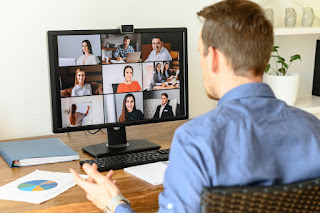
In the final week of February, Penang saw 922 new cases.
PENANG’S Covid-19 infectivity or R0 stood at 1.01 on the last day of February, compared with the national average R0 of 0.91, said Chief Minister Chow Kon Yeow.
R0 – pronounced R-naught – is an indicator showing how contagious a disease is.
Chow said in the final week of February, between Feb 21 and 27, Penang saw 922 new cases.
Out of this, 574 cases (62.25%) were locals and 348 (37.74%) comprised foreigners.
“A total of 16,180 Covid-19 tests were done throughout that week by various health facilities under the supervision of state Health Department.
“The majority of screenings were focused on close contacts of positive patients, screening at workplaces in factories as well as construction sites, and symptomatic screenings.
“For the screening of foreigners either registered under Socso’s Prihatin Screening Programme or under employers’ initiatives in manufacturing and construction, the state Health Department reported that as of Feb 28,68,939 people had undergone screening and 2,435 positive cases were detected, ” he said in a statement after attending a National Security Council (NSC) virtual meeting on the management of Covid-19 chaired by Prime Minister Tan Sri Muhyiddin Yassin on Monday.
Chow added that the current approach was aspect-based public health as well as vaccinations.
“The Health Ministry as well as Energy, Science, Technology and Innovation Ministry are urged to continue to move in tandem with the Covid-19 Immunisation Task Force (CITF), which was specially established at the state level.
“In Penang, phase one of the National Covid-19 Immunisation Programme has been running smoothly in every district.
“Our frontliners will always remain the priority as a commitment and principle held by the state government over the years.
“Let us all together make the vaccination programme a success, which is important to revive the growth of the economy in the state, ” he said.
Chow said in the NSC meeting, the technical committee was asked to examine the standard operating procedures of the tourism sector.
Factory clusters made up about 60% of newly-detected workplace infections in the past fortnight.
Manufacturers attribute this to more tests which resulted in a steady rise in workplace clusters as the screenings were able to pick up more cases among workers.
Covid-19 screenings for foreign workers that ended in February have been attributed to factories making up about 60% of new workplace clusters, says the Federation of Malaysian Manufacturers (FMM).
Its president Tan Sri Soh Thian Lai said one possible reason for the increase in workplace clusters was the rise in community transmission, especially after the start of the third wave of the virus last year.
“Covid-19 is already within the community with 89% of patients being asymptomatic or showing mild symptoms.
“This is despite the government’s efforts to mitigate the spread of the virus and industries implementing the necessary standard operating procedure and precautionary measures,” he said when citing a media report in December.
Soh added that it was then made mandatory for foreign workers to undergo Covid-19 screenings, effective last December.
“The mandatory screenings were conducted in phases until Feb 28.
“As a result, we have seen a steady rise in workplace clusters as the screenings were able to pick up more cases among workers, especially those who were asymptomatic,” he said.
Based on Health Ministry data from Feb 13 to 28, factories contributed to 92 out of 146 new workplace clusters (63%) that emerged in the last couple of weeks.
This is an increase from the period between Jan 28 and Feb 12, where 49% of new workplace clusters were located in factories.
Other notable workplace clusters from Feb 13 to Feb 28 were construction sites (12%), markets and restaurants (8%), public administrative centres (3%) and educational institutions (2%).
Even when including non-workplace clusters such as community clusters, factories still made up 52% of the clusters.
Among the factory clusters, about 47% were located in Johor, while Selangor and Penang made up 34% and 7% respectively.
Soh said FMM had reminded its members to implement proactive measures to prevent Covid-19 outbreaks at the workplace and at workers’ living quarters.
“Among the measures are paying greater attention to workers’ hostels and housing, ensuring compliance with strict SOP, including the requirement for physical distancing in the living environment and imposing such requirements on sub-contract workers.
“We limited the capacity of vehicles or buses ferrying workers to 50% or less to ensure physical distancing.
“We implemented measures such as working in rotations or relocating staff to minimise closure of entire sections. We also appointed a senior management member of the company to oversee SOP compliance at the workplace,” he said.
However, Soh said there had been difficulty in monitoring and controlling the activities of employees outside the workplace.
Complying with housing standards for workers also proved a challenge as there was acute shortage of accommodation space, he added.
“There is also a lack of centralised living quarters to house workers, and it has been challenging to get approvals from the local councils for the use and conversion of shoplots as accommodation,” he said.
Soh said there were also strong objections from resident associations and joint management bodies when trying to house workers in residential areas.
Scientist suggests a more effective approach to COVID-19 ...
















